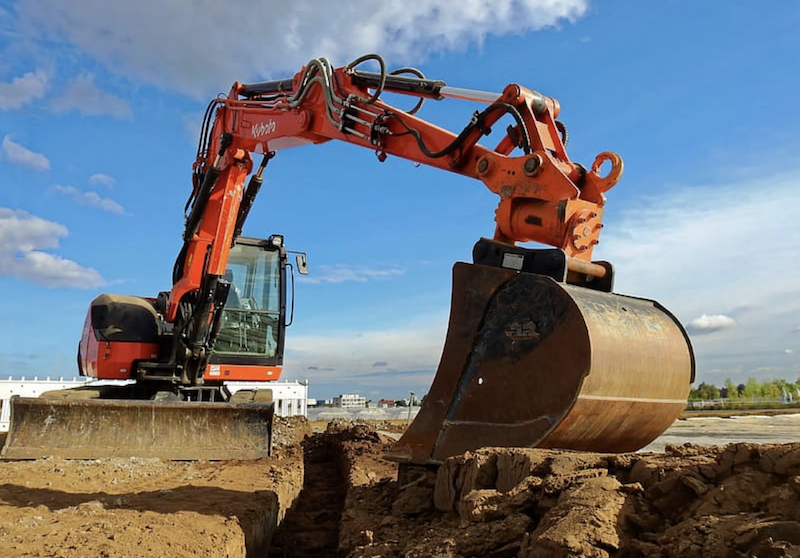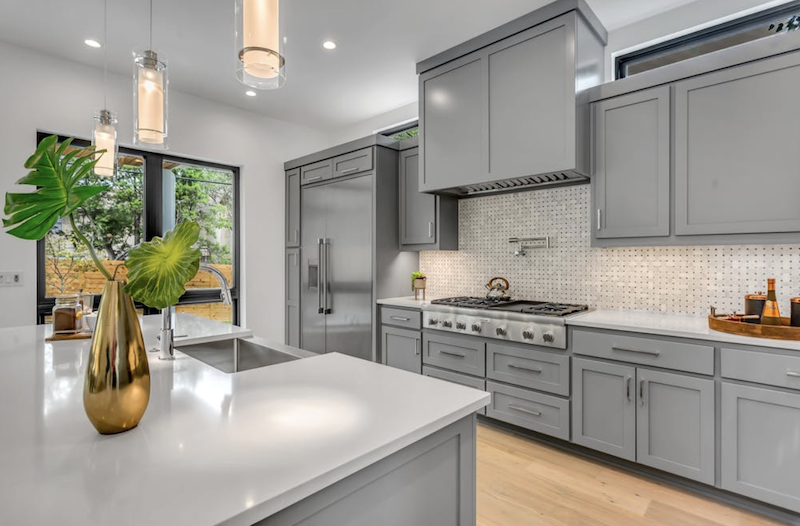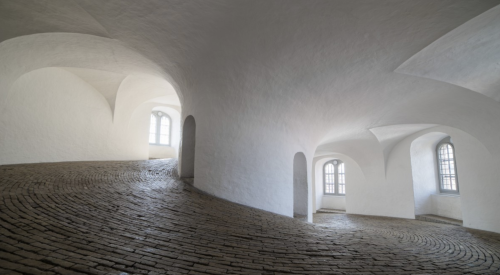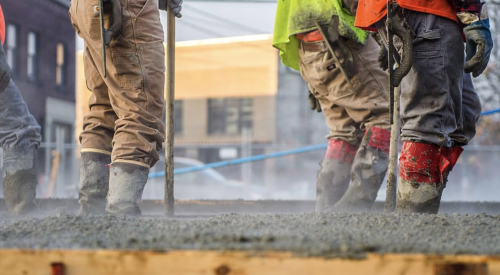The home building industry has stubbornly resisted innovation and new technology. There is some logic behind this. It’s already such a high-risk business, many builders say, so why add the risk of pioneering new methods? However, it’s dangerous to think that way today. The whole world is changing. Customers in this e-commerce era are conditioned to expect rapid progress in the quality of every product. Why should a home—the largest and most expensive item they ever buy—be any different?
New materials, products, and techniques are appearing today at a faster pace than ever before. And while there is risk involved in these innovations, there’s also the promise of big gains in customer satisfaction. To find the best new ideas in home building, and innovations to better manage the construction process, we sought out builders known as innovators and asked what new methods they’ve adopted that really work well. Here’s what we learned:
1. Install a Chase for Wiring Upgrades
No matter where builders fall on the technology curve, few would disagree that homeowners are demanding high-tech upgrades such as high-speed Internet connection capabilities, multiple phone lines and whole-house sound systems. But for many builders, offering a complete high-tech wiring package is simply not feasible, nor is it particularly practical.
Curt Langille, of Lanco Development, a custom building company in McHenry, Ill., has devised a simple and inexpensive solution. Unless his buyers have a very specific picture of exactly what their wiring needs are, he installs a two-inch plastic chase that runs from the basement to the attic so that wiring can be easily updated as the homeowners’ needs change.
"All you have to do," Langille says, "is locate two walls that stack one on top of the other, preferably in a central location." Run the PVC chase through the wall from the basement to the attic during framing, leaving a few inches of the pipe exposed in both places. Wiring can be threaded through the chase from either direction for access to the home’s ceilings and floors.
2. Fresh Air at Moderate Temperatures
The green building and sustainable development movements are not new. Master Builder Edward O. Paschich, of Passage Homes in Albuquerque, N.M., has been in the business for 25 years. Most of that time he’s been testing and trying out building concepts that not only make homes environmentally friendly but also make them better. Building about 12 custom and spec houses each year, his company is proof that you don’t have to be big to be innovative.
Many builders are aware of the growing issue of indoor air quality. Tightly sealed homes are more energy efficient but lack fresh air. To address this issue, Paschich has built a number of homes with ground-based air intakes. While these are distinct from geo-thermal systems with deep vertical shafts drilled beneath homes at great expense, the benefit is similar: fresh air that cools in the summer and warms in the winter.
Paschich’s system relies on 80-foot runs of 89 stainless steel pipe buried at a six-foot depth. One end of each pipe rises to connect with a floor register in the home, the other rises in the yard. There it is covered with bug screening and a rain cap, and is surrounded by landscaping. For a 2500 square foot home, Paschich will bury eight lines. Four will be connected to air registers in the great room and the others will serve each bedroom. In the summer, the home will draw in air that ranges from 65 to 70 degrees, he says, with the aid of a duct fan. In the winter, air at the same temperature will naturally rise into the home. This more moderate air-intake temperature greatly reduces the heating and cooling requirements of the home.
These earth-based air intake systems date back to mosques built in the Middle East more than a thousand years ago. The mosques were like large chimneys pulling earth-cooled air inside from a maze of subterranean airshafts.
The cost for building the system is also moderate. Paschich says one Bobcat can do all of the needed trenching in three hours.
3. Give More Attention to Framing Inspection
Ed Webber, vice president of operations out of the North Carolina division of Pennsylvania-based Toll Brothers, Inc., has more than 28 years of construction experience and he stresses one major point: framing inspection. Calling it the most important part of the construction process, Webber says that is when builders get a chance to fix mistakes in the rough. This results in happier tradespeople and buyers.
"Little things like adjusting the shower head height or replacing bowed studs are easier to fix right after the framing stage," says Webber. "It’s a lot better than patching drywall or explaining a gaffe to the owner."
4. Recondition Excavated Soil for Uniformity
Denver semi-custom builder Larry Larsen is an innovator in the industry, always tinkering with how he builds, usually in response to problems as they emerge. One such problem on Colorado’s Front Range is expansive soils, which wreck enough high-profile homes to make buyers antsy.
Larsen thinks he has that problem licked. He over-excavates every home site—to 5 feet beyond the edge of the foundation on each side, and as much as 7 to 10 feet below—reconditions the soil, then puts it back: "We take out as much dirt as the soil engineer recommends," says Larsen. "We get all the pockets of soil at various levels of moisture and mix them up.

"We bring in a water truck and water the soil, get the moisture content up and uniform, so what we’ve really done is pre-expanded the soil. All of the studies show that if you get it wet down deep, it stays wet. Only the top dries out, and we take care of that with landscaping water. We’ve been doing this for two years. I guess we’ll know for sure how in works in about ten years, but so far, so good."
It costs Larsen about $3000 to $5000 per lot. Some of that cost can be recovered by using spread footings in the foundation as opposed to caissons. But buyers at the $400,000 price point where Larsen builds seem to accept the cost to bolster their peace of mind.
5. Concrete Structural Floor Systems
Charleston, S.C., builder Hank Hofford has the advantage of searching for better ways to build without a worry in the world about busting the budget. On Kiawah Island where he builds, entry-level homes start at $1 million. But the challenge is as large as the price tag: people who pay $1 million and up for a home expect it to last, and that means emerging unscathed from the occasional hurricane and the constant battering of salt air and sun.
Bennett-Hofford Co. never stops looking. Hofford’s latest innovation, unveiled at Ocean Oaks on Kiawah, is a concrete structural floor system—rather than wood—used on all the decks, piazzas, steps and stairs that surround each home.
"We’ve got between 600 and 1200 square feet of those spaces around each house," says Hofford. "We use a structural pan to pour a four-inch slab for the deck or piazza, then we have a topping contractor come in and dye, stamp and hand-tool colored patterns to look like more expensive pure stone surfaces. They even chisel out the joints between patterns and grout them so it looks like hand-laid limestone or coral stone. It creates a durable, long-lasting surface that prevents moisture intrusion and deterioration. We really don’t know how long it will last, but I’m betting it will be a lot longer than wood."
Hofford spends $11 to $14 per square foot for these exterior surfaces, but his buyers don’t seem to mind. "It really makes a screened porch much more of a finished space than wood."
6. Control Foundation Cracks
A past Builder of the Year (1991) and National Housing Quality Award winner (1994), Cincinnati-based The Drees Co. is known as a solid, conservative outfit. And yet, construction VP Jack Herbstreit has a long history as a cutting-edge innovator.
He recently pioneered the use of vertical control joints in concrete basement walls, to control cracking and water leaks. The idea is simple but smart: If the wall wants to crack, create a controlled weak point where, if and when it does crack, a fiberglass membrane is in place to keep it from leaking.
"We nail pieces of 2 x 2 to each side of the form before the concrete is poured," explains Herbstreit. "They actually form an indentation in the foundation wall. Then there’s what we call a ‘wire water stop,’ a piece of fiberglass material placed in the wall at that point. If the wall is going to crack, it will do so at its weakest point—the control joint—and the water stop will prevent any leaking."
Herbstreit installs the control joints every thirty feet on center, preferably at a window corner. "When you put a window in a foundation wall, that weakens it," says Herbstreit. "History has shown us that’s where the wall most wants to crack. All we are doing is forcing it to crack in the joint, where we want it to, so we can prevent any leaks."
Using the same logic, Herbstreit now tools grooves into concrete basement and garage floors during the finishing process. These more modest control joints are not aimed at preventing leaks, but rather to keep hairline cracks in the floor in the grooves, where they are not likely to be noticed. "We profile where we want the hairline cracks to form, so they don’t become unsightly."
7. Flashing Membrane Prevents Leaks
Leak prevention is the goal of a flashing membrane Herbstreit has applied (by a special contractor) to the top of foundation brick ledges. This flashing also covers approximately 12 inches of the sub-floor band board. All inside and outside corners and wire or pipe protrusions are also sealed.
"Brick leaks," explains Herbstreit. "Once water gets behind a wall, it will run down and sit on top of the foundation. When that happens, it will migrate under the sill plate and inside the house, running down the basement wall. There are lots of ways to prevent this. A lot of builders have their framing carpenters install a membrane. We’ve found that framers don’t have a lot of interest or expertise at it, so we give that job to a specially trained contractor."
The contractor runs the flashing membrane down the wall, covering the band board, and seals it to the top of the foundation to create a sealed brick ledge. Water hits the membrane and goes out through the brick weep hole system.
Within that weep hole system, where holes are installed on every third brick, Drees has come up with another innovation: "weep cards" used to ensure that the weep holes remain clear of mortar. "It looks like a furnace filter," says Herbstreit, "cut into a two-inch-wide strip, twelve inches long. We put it behind the brick to form the weep hole. What it does is prevent mortar droppings from above filling in the cavity. The biggest problem with weep holes is that bricklayers put them in, but then their mortar droppings fill them right up. This piece of screening keeps that from happening."
8. Super-Clean Ductwork Prior to Move-In
One of Larry Larsen’s more interesting recent innovations is the use of a "monster vac" to clean out all the ductwork in a house before closing. That’s a truck-mounted, high-powered vacuum that pulls taco wrappers, pop cans, pieces of 2 x 4, dust, debris, etc., from the ducts—to the great relief of Larsen’s buyers.
"What’s really funky about those trucks are the huge vacuum bags and the way they shoot up into the air," Larsen laughs. "It’s incredible what they pull out of houses that are supposed to be clean. No wonder people complained about air quality issues and noisy ducts. The good news is, the complaints have stopped."
9. Use Low-E Glass
Although it is a concept familiar to most and standard to some, a lot of builders still are not using low-E windows. A low-E (low-emissivity) coating, which is applied to one or more of the layers of glass that make up the window, increases the window’s insulating value and filters out ultraviolet light.
All low-E, however, is not equal. The key, says John Kurowski, president of Kurowski Development Company in Denver, is choosing the low-E windows suited to the climate—a heating climate has very different insulation needs than a cooling climate. He suggests simply speaking with a knowledgeable representative from the window manufacturer or distributor to determine the appropriate window glazing system for the climate. Almost all window companies offer low-E windows, and some apply low-E coatings to all windows.
RELATED
10. Building Systems
"I would encourage all small builders to take advantage of the opportunities that building systems companies offer," says Jerry Rouleau of J. Rouleau & Associates of Hanover, N.H. His company, a marketing and public relations consulting firm, has a large number of system builders for clients. He is also active in the Building Systems Council of the NAHB.
Whether simply ordering trusses or having the entire home shipped in panels or modules, Rouleau says small builders who use these component manufacturers stand to reap very real rewards.
"System building is a sure-fire solution to the labor crunch, which is extending cycle times and shrinking profit margins around the country," says Rouleau. "And the manufacturing process results in far less construction waste, which benefits our environment."
Rouleau also stresses the access to technical support and CAD technology that these companies offer, which allows small- and medium-volume builders easier entry into commercial and multifamily construction.
"Many systems building companies have model home programs to help small builders set up a model," says Rouleau. "And they quite often carry materials that are superior in quality than a lot of local lumberyards."
11. Copper Roofs
Perhaps the most obvious extravagancies on Hank Hofford’s houses are the roofs: "About 60% of the homes we build have hand-crafted copper roofs," he says. "They will last between 60 and 100 years. I put some on 20 years ago that came through Hurricane Hugo without a scratch."

There’s a tradition of metal roofs along the South Carolina coast, but copper is a step up from the norm. "We have experienced installers here, who do a lot of commercial work downtown," says Hofford. "They buy the copper in big rolls and fabricate panels to the exact size needed for the runs on each roof. There are no seams or joints in the middle of a run. They screw down the tabs to the 5/8-inch or 3/4-inch plywood panels on our custom-framed roofs. There’s also a self-sealing, waterproofing product on the roof before the copper is installed, since we don’t want to wait for the several weeks it takes to install the copper to work inside the house. Then, they solder the critical joints in the copper," he says. "We end up with an incredibly tight seal. And of course, all our roofs are double-strapped, which exceeds even the hurricane codes in force on the sea islands."
12. Concrete Structural Floors
Larry Larsen is using concrete structural basement floors, with a void below, as opposed to wood structural basement floors. The benefit is reduced indoor air quality problems, due to a reduction in moisture accumulation under the structural floor. Obviously, the potential of the wood decaying also goes away.
13. Trust Building
As David Weekley Homes expands from regional to national operations, the Houston-based Giant is training trades and suppliers, as well as employees, in production methods that take "best practices" learned in any division and spread them across the country. However, Weekley’s biggest breakthroughs have come in new ways to maintain relationships of trust with buyers.
"We have a book called 'Home Buyer Portfolio that outlines for customers exactly how we will build their home," says vp of operations Mike Humphrey. "It tells who is responsible for what—what the sales rep will do, what the builder and warranty service rep handle, and what the buyer is responsible for in maintaining the home. It’s very difficult to do this verbally and have it stick. 'Portfolio' puts it all in writing."
Included are five planned meetings with buyers during construction, to go over every detail and answer every question. These occur 1) prior to construction start, 2) just prior to drywall installation, 3) prior to installation of colors (carpet, wallpaper, tile, etc.), 4) a day or two before closing and 5) two weeks after closing. Builder and sales rep hold the first four. The warranty service rep holds the last.
At each stage, customers learn what will happen next, and the builder goes over option and customization selections, to make sure that every element of the job is right and the customers know what to expect the next time they visit the site. Weekley sales reps also call or e-mail once a week to keep buyers updated on the progress of construction.
"We always welcome buyers to the site," says Humphrey, "even at critical inspection stages like the one we call '244 process,'' between review meeting three and four, where the builder goes over the house with a microscope and marks any imperfection in walls, paint, trim, etc. We used to have people freak out if they saw the house in that stage. Now, we’re getting much better at explaining exactly what’s going on, and why every mark is a good thing, not bad."
14. Balanced Attic Ventilation
Most builders install as much ridge and soffit ventilation as possible, says Jack Herbstreit, but that can result in an unbalanced system with nasty results. "When too much soffit venting is used, the ridge vent becomes the intake instead of the exhaust," he explains. In a cold climate, that means the house pulls snow into the attic.
His company had to learn this the hard way. "Because of the way our houses are designed, there’s usually more opportunity to put in soffit vents than ridge. We were following the '1/300th' rule. That’s a standard code application that says venting must equal 1/300th of roof area. Like most builders, we were putting in as much venting as possible. We didn’t know you could get too much of one kind. But we had 30% ridge and 70% soffit.
"We didn’t understand the problem until we started getting warranty calls about leaky roofs," Herbstreit says. "We couldn’t figure it out, until one day, a warranty rep went up into an attic and came down with two garbage cans full of snow. The ridge vents were pulling it in. You want the ridge vent, which is at the highest point of the roof, to be an exhaust, expelling warm air on hot summer days. We now make sure the vents balance, so it works the way it’s supposed to."
15. Use a Conveyor Belt on Tight Lots
"If you often build on zero or very tight lot lines, I recommend buying, leasing, or renting a dump truck with a conveyor belt," says Joe Keppler, president of the Construction Management Advisory Group in Fort Washington, Md. He explains that it works in much the same way as a concrete truck with a chute, and makes placing crushed rock over drain tile and gravel fill next to the foundation faster and more profitable.
"It is an expensive item to purchase, but if you need it enough it pays for itself in possibly a couple of years," says Keppler.
16. Tools That Save Time
"I would also recommend not being afraid of the newer time-saving tools, even if you’re a die-hard traditionalist," says Keppler of such things as drywall tools that spread tape and mud at the same time. "They may not be effortless, but they are user-friendly and a huge time-saver once you get the hang of them."
17. Monolithic Foundation
Portland, Oregon-based developer and builder Rick Holt of Holt & Haugh Companies is a strong advocate of new urbanism. The company started as a developer and moved into home building three years ago. That is why many of its ideas for building better homes have come to it via their principal subcontractors.
One of these ideas is the practice of pouring the concrete for the footings and foundation all at one time. It creates what is called a monolithic foundation. The benefit of foundations constructed this way is greater overall strength. The reason: Rebar for footings and rebar for foundation walls are woven together in a single unit prior to pouring concrete. Doing the rebar work takes more time on the front end, says Holt & Haugh’s Kate Gillespie, but the pour itself goes faster.
18. Stronger Attic Stairs
A major problem that Mike Humphrey sees is the increased stress on attic stairs -- many are simply not made to withstand construction traffic. His solution is a dramatic upgrade of nailing patterns.
"We use a lot of pull-down stairs for attic access," Humphrey says. "We have to make sure those stairs can handle the traffic, and support even the biggest guy who might use them. You can imagine the liability issues that could result from a failure. We want to make sure that doesn’t happen."
19. Paint the Basement
Jim Emery of Quail Valley in Des Moines, Iowa, paints all his basements before the home buyer moves in. Using paint specifically made to adhere to concrete, he paints the walls and ceilings so that the basement is an immediately usable space.
"It’s a simple thing," says Emery. "It adds only about $600 to the total cost and it really brightens it up."
In addition, he suggests creating basement walls with texture rather than flat concrete walls. To create walls that look similar to brick -- yet have all the benefits of a continuous solid concrete foundation -- he pours the concrete into three by eight-foot molded forms that resemble the texture of brick. When painted, the finished walls are much more visually appealing.

20. Cabinet Blocking
Cabinet blocking is standard practice for most top builders, even though there’s no code requirement for it. Recognizing this lack of standardization across the industry, Weekley customizes blocking to the exact specifications of cabinets selected by the buyer. "We want to make sure the blocking is in place to give full support to cabinets at the specific heights the buyers select," says Humphrey. "No matter what they put in that cabinet, it’s never going to pull off that wall."












